If you told me years ago as I was working in corporate America – heck, even two months ago working for Winetraveler – that I would be tasting wine in a castle in Romania, I would have thought you were crazy. Now, having traveled through this Eastern Europe country, I can’t imagine anyone not having this on their wine travel bucket list. It all started with an invitation from Jidvei, a family-owned winery in the foothills of the Carpathian Mountains in the rolling hills of Transylvania.
Transylvania is a historical region of Romania, situated in the middle of the country and bound to the east and south by the Carpathian Mountains. It’s also an important wine making region dating back more than 6,000 years.
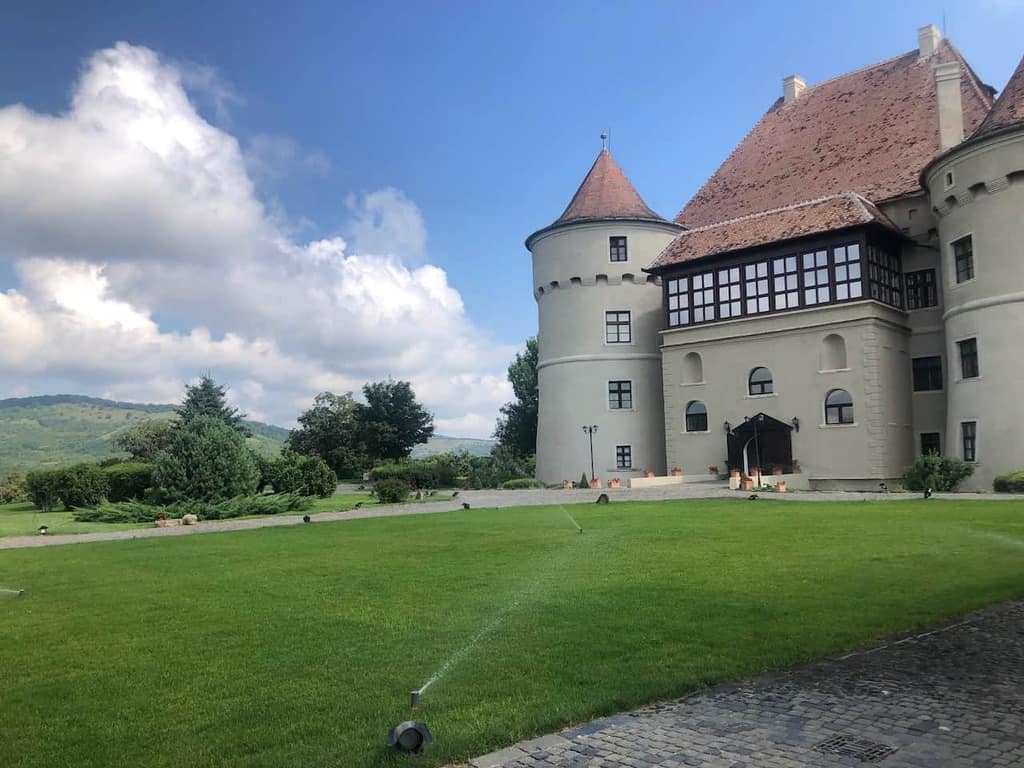
Now I fully admit, that like many Westerners, I had little concept of Romania outside of Dracula, bats and gymnastics. I am even too young to recall the politics of the late 1980s, so I had little knowledge of the country’s history and economy. It was still hard to get a sense of what to expect during my pre-trip research; however, after a week traveling from Bucharest to the mountain town of Cluj-Napoca and all the stops in between, I can say I have a much greater appreciation for the deep cultural history, rich beauty and of course, the wine. That said, I have no doubt I only scraped the surface, but the wines of Jidvei were a great place to start.
A Sense of Place
Romania has one of the oldest winemaking traditions in the world and remains one of the top five wine producing countries in Europe. Eight wine regions can be found spanning the country with the DOCs found at the sub-regional level. Wine is a significant part of the Romanian culture and the typical beverage of choice served with meals, and it’s no wonder given the climatic and geographical conditions with which they have to work.
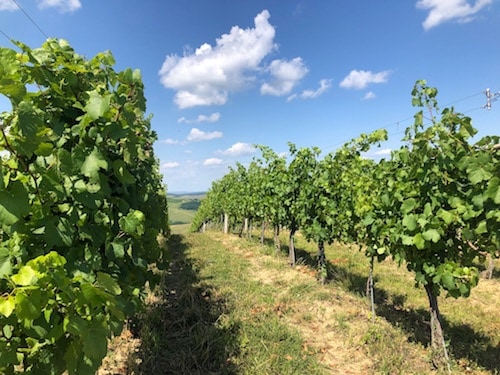
Transylvanian Terroir
Focusing specifically on Transylvania, it shares the same latitude as Burgundy. However, Transylvania also has a rain shield, similar to that of Alsace owing to the mountains. In other words, the region greatly benefits from moderated temperatures, sunny days, optimal rainfall, significant day to night temperature swings, and occasional autumn fog. Each of these factors favors the accumulation of sugars and flavors while preserving the natural acidity of the grape. Additionally, the southwestern slopes also protect the vines from spring and autumn frost, with the south and southeastern slopes providing altitudes between 200 and 500 meters above sea level, optimal for vine growth in the region.
Târnave DOC
Looking at the wines of Jidvei, the grapes come from the Târnave DOC and the Târnave Vineyard, which lies within a basin formed by the Târnave Mică and Târnave Mare rivers. The soils are comprised of clay, marl, gravel and alluvial sand and were valued for quality vine growth by the Saxons who moved to the area in the 1200s. The DOC is also believed to be the birthplace of Fetească Regală and is a significant growing region of the local, pre-phylloxera Fetească Albă, both noted for their floral fruitiness, minerality, freshness and high acidity.
While winemaking has spanned centuries, during the years between WWII and the fall of the Iron Curtain, the focus for the state-owned wineries was on quantity over quality. Vineyards and winemaking techniques centered on mass production and like most large wineries in Romania, Jidvei State Agricultural Enterprise was founded during this time. However, this DOC boasts particularly notable terroir and as a result, Jidvei took home several international awards for its Traminer Roz, Fetească Regală and Sauvignon Blanc in 1958.
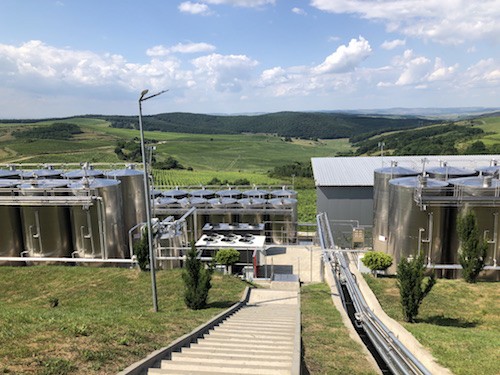
Jidvei Today
Fast forward 50 years to the fall of communism and 180,000 hectares of Romanian vines were returned from the government to the farmers. It was a turbulent economic time and many vineyards fell into disrepair. In 1999, Jidvei was no exception, but was purchased by a family from outside the region with the intention of improving the vineyards and modernizing the winery. The family established one of the first vineyard nurseries in Romania to produce viticulture planting material with high-quality, native biological value.
The focus for Jidvei was the authenticity and origin of varieties and clones best suited for the region and seedlings free of viruses. This they believed was the key to achieving long-lived vineyards, with positive influences on the quality and quantity of the production. Next, based on complex studies, Jidvei cleaned, fertilized and prepared for planting vines chosen from the nursery.
Today, the vineyards of Jidvei are the largest in Romania and the largest solely owned in Europe. With the accession of Romania into the European Union in 2007, additional funding from the EU has resulted in further new technologies, replantings and modernizations. In fact, this is seen throughout Romanian wine regions and has led to the establishment of many new small producers as well. At Jidvei, the production facilities have been modernized, with new wineries built, including the largest gravitational winery in Europe utilized primarily for the winery’s aromatic varieties and the vines within close proximity of the facility to shorten the transport time from picking to fermentation. Significant effort has been placed on exports and marketing to help spread the word globally about the quality of Romanian wines and the potential the terroir has for elegance, balance and structure.
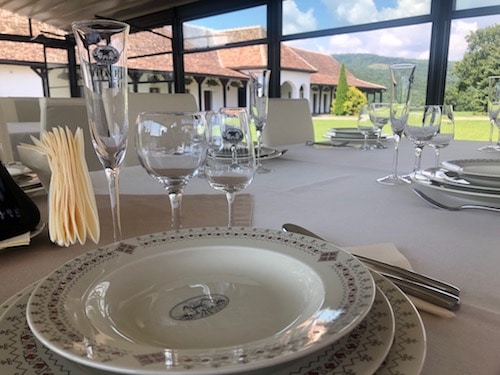
A Sense of Community
As I mentioned, the private family that purchased Jidvei in 1999 was not local to the region. As you might imagine, in a small, rural town with closely knit community ties, there was nervousness and skepticism when “outsiders” purchased the winery with its long, cultural history in the region. Would they maintain the traditions, value the history, understand the terroir and support the local labor force? The short answer is, yes – and then some. The family recognized the winery’s intrinsic connection with the local community and began by hiring locals to help farm the land, understand the terroir and improve the vines. Locals were hired to work in the nursery, winery, lab and to help manage the vineyards and harvests. The family’s sole interest was to make wine that represented its origins, place and terroir, and local knowledge is essential for that. In fact, to this day, the town’s largest employer is Jidvei who now also provides transportation to its employees in neighboring villages to support the 15 million bottle production and manage the more than 2,500 hectares of vines.
But it’s not just employment Jidvei brought to the region, they also support the local community through its gardens, bakery and art programs. Jidvei’s nursery features a vegetable garden, all grown organically and for the local employees. The bounty is also used for meals provided at the winery to its special guests and visitors. The bakery produces bread and baked goods daily. The bread is again used for meals at the winery, but also so that each employee of Jidvei has one to take home daily. It’s also used to provide 150 lunches for kindergartners every day through the school year as well as to supply the local senior centers. Local artists are supported through special label programs and contests, and each spring a winemaking competition is held for the community. Jidvei provides aspiring home winemakers with clarified juice, yeasts and private consult and each year they award the “best home winemaker.”
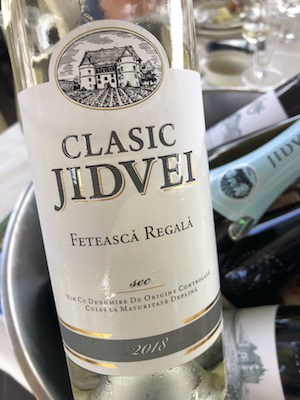
The Wines of Jidvei
I come to the wines of Jidvei last. Not because they are least important, but because in order to understand the wines, I think it’s imperative to have an appreciation from where they come from – and it has been a long journey, which in fact, continues to this day.
I’ve heard the best wines result from the best vines, and other times that technology and winemaking expertise has made it so anyone can produce a quality wine. But in truth, wine is far more than either of those alone. It’s a compilation of nature, man, technology and education. But it’s also time, terroir, generations, ethos and heart.
Think of the individual feet that have walked the fields, hands that have trimmed the vines, lessons learned, hearts broken and the joys of success over centuries. It’s all there – in the wine that’s bottled, sold and continues its journey and story in the hands of those who enjoy it.
So what follows are tasting notes for a few of the more than 50 estate wines produced at Jidvei. These range from the dry, still wines to the traditional method sparkling wines. But what cannot be conveyed is the preserved history, the passion and the Romanian heart. To truly know those qualities, you’ll have to discover Jidvei and Transylvania for yourself.
International Varieties
Owner’s Choice Ana Sauvignon Blanc
Sauvignon Blanc is grown on slopes with southern or southwest exposure, with full sun for grape ripening. Jidvei produces both dry and semi-dry Sauvignon Blanc, with the Ana being a dry, light and fresh style. This aromatic wine is produced at the winery’s gravitational center with the 2018 vintage boasting notes of lemon, cypress, and garden herbs with hints of bell pepper and grapefruit. While varietally characteristic of Sauvignon Blanc, this wine is unique to its origin in the Carpathian foothills.
Owner’s Choice Maria Pinot Gris
Jidvei’s Pinot Gris grapes accumulate the highest amount of sugar and acidity. The wines benefit from slight maturation after which they become fine and dynamic. The 2018 vintage of Maria is a dry, medium body wine with notes of apricot, green apples, white blossoms and minerality.
Vin Spumant Extra Brut
Made through the traditional Champagne method and using Chardonnay, Pinot Noir and Fetească Regală grapes, the Extra Brut is crisp and refined. The wine is fermented, clarified and delivered in the same bottle as the one in which the second fermentation takes place — for that classic effervescence. Everything from the fermentation, riddling, to the disgorging are done manually. All 10,000 bottles of sparkling wine! The care that goes into this wine is evident in its freshness, persistent perlage and elegance. Here you’ll find classic notes of citrus, baked bread and white blossoms.
Local Varieties
Fetească Regală
The variety was first identified in the 1920s on the Târnave vineyard. It adapts easily, is self-fertile and very productive. Feteasca Regală accumulates moderate quantities of sugars to produce wines that are both dry and semi-dry, characterized by freshness and balance. The 2018 vintage is dry with high acidity and crisp freshness. It has intense floral notes on the nose followed by aromas and flavors of acacia, apricot, pears and minerals.
Owner’s Choice Maria Fetească Albă
A traditional variety, Fetească Albă is cultivated in all the vineyards in Romania and is the Romanian variety with the largest international exposure. The short growth period and the high capacity to accumulate sugars are its main characteristics with secondary fermentation aromas reminiscent of the vineyard scents. Fetească Albă wines are typically dry, acidic and full of freshness,. But they can also be made medium sweet with notes of fresh honey. The 2018 Maria is dry with high acidity, a medium body and notes of grapefruit, tarragon, white blossoms, pear and slight minerality.
Mysterium
Mysterium is a blend of Chardonnay, Pinot Noir and Fetească Albă. This stunningly artistic label is dry with a medium body and high acidity with notes of white flowers, citrus, melon, apricot and minerality. The Chardonnay is observed in the body of the wine, while the Fetească Albă brings the freshness. And if you happen to find this label, it will dazzle under UV light!
Romania is one of Eastern Europe’s best-kept secrets in my opinion. From the captivating rolling hillsides to the vibrant and developing cities, I don’t think the secret will be kept long. And the same goes for the wines that are no doubt to become known internationally for their quality and unique terroir. Have you visited any wineries in Transylvania?
You are reading “Here’s Why You Should Visit Jidvei Winery in Transylvania, Romania” Back To Top
Europe travel ideas, Eastern European wineries: Slovenia itinerary
If you enjoyed this guide, consider joining the Facebook Group to interact with other Winetravelers and for travel inspiration around the world, and be sure to follow along with us on Instagram.